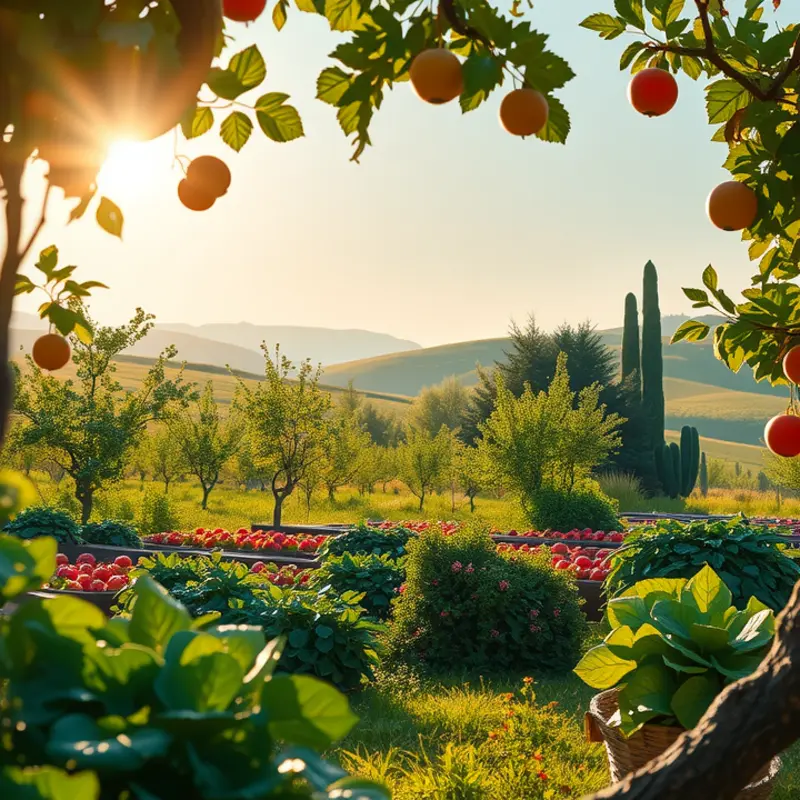Extending the freshness of produce can significantly reduce food waste and save money. With the right storage techniques, you can enjoy your fruits and vegetables longer without sacrificing quality. This guide provides practical tips to help you store your produce safely, ensuring they stay fresh and delicious. By mastering simple strategies, you’ll minimize waste and elevate your food management skills, leading to a more sustainable household.
The Science of Freshness: Understanding Produce Lifespan

Fresh produce, once harvested, begins a delicate race against time. The factors influencing its lifespan are complex, yet understanding them can significantly help extend your produce’s freshness. Three pivotal elements—ethylene gas, temperature, and moisture—play crucial roles in this process.
Ethylene gas, often dubbed the “death hormone” in plants, is a natural plant hormone that regulates fruit ripening. Many fruits, such as bananas and apples, emit ethylene. When stored together with ethylene-sensitive produce, they can accelerate ripening and eventual decay. Consequently, storing ethylene-producing fruits separately is critical. A practical approach includes using separate drawers in your fridge or storing them in paper bags to minimize exposure.
Temperature is a critical factor that affects the rate of chemical and biological processes within produce. Most produce thrives in cooler environments, which slow down the ripening and spoilage process. However, not all produce benefits from refrigeration. For instance, tomatoes and potatoes should be kept at room temperature to maintain their texture and flavor integrity. On the other hand, leafy greens and berries prefer colder temperatures to stay crisp and prevent mold growth.
Moisture management is another vital aspect of extending produce freshness. Too much moisture can lead to mold and decay, whereas too little can cause produce to become dry and shriveled. To maintain the ideal humidity levels, use storage techniques like perforated bags to allow air circulation without causing excessive drying. Additionally, employ humidity-controlled crisper drawers if your fridge has them, adjusting the settings based on the types of produce you’re storing.
Ripening is a natural process that transforms flavor, texture, and nutritional content over time. By understanding how ethylene, temperature, and moisture impact this process, you can make smart storage decisions to extend freshness and reduce waste. You can further explore these aspects in sustainable kitchen practices at eco-smart kitchen storage, focusing on reducing environmental impact.
Incorporating these insights into your daily routine requires only small adjustments. By paying attention to these factors, your fruits and vegetables can remain fresher, taste better, and lead to a more eco-conscious kitchen environment.
Storage Solutions: Best Practices for Keeping Produce Fresh

Optimizing how you store fruits and vegetables can significantly prolong their freshness. Different types of produce have specific storage requirements to maintain their quality. Adapting your methods to these needs not only helps retain taste and nutritional value but also minimizes waste.
Understanding Temperature and Humidity
Many fruits and vegetables thrive in specific temperature and humidity environments. Leafy greens, for example, prefer a cold and moist atmosphere. Storing them in the refrigerator’s crisper drawer helps, as these sections often have higher humidity. Conversely, root vegetables like potatoes and onions should be kept away from each other in a cool, dark place, as onions release gases that accelerate spoilage.
Fruits such as apples and pears produce ethylene gas, a ripening agent. Store them separately from sensitive produce like berries or leafy greens to avoid premature spoilage. Keeping ethylene-producing and ethylene-sensitive items in distinct areas can extend the life of both.
Use of Produce Bags and Wrapping
The role of appropriate wrapping cannot be overstated. Some produce, like mushrooms, stay fresher when stored in paper bags in the refrigerator, as they need to breathe. Most leafy greens benefit from a breathable, slightly damp cloth or paper towel wrap before placing them inside plastic bags or containers. This method adds moisture to the leaves, keeping them crisp while preventing excess condensation.
Optimal Use of Refrigeration
Refrigeration is essential for some produce, but it’s crucial to note which items do better at room temperature. Tomatoes, for example, lose flavor and texture in the fridge. They should be kept stem-side down on the counter. On the other hand, berries can be refrigerated and rinsed only before consuming to prevent mold. The crisper drawers in your refrigerator are your best friend for controlling environments—it often supports two distinct climates. Use one for high humidity (airtight) and the other for low humidity (with vents).
Practical Tips for Everyday Use
A simple yet effective tip is to store certain fruits and vegetables together or apart based on their ethylene production and sensitivity. For example, store avocados or bananas away from kiwi to extend kiwi’s lifespan. Moreover, avoid washing produce until you’re ready to eat it since moisture encourages mold and rot.
Smart storage involves a mindset towards reducing waste, aligning with broader eco-friendly habits. Adopting eco-smart kitchen storage practices can further enhance your produce storage strategy by introducing reusable containers and strategies to process items nearing spoilage into new meal preparations.
By implementing these tailored storage solutions, you cater to the unique needs of each type of produce, ultimately extending its shelf life. This thoughtful approach underpins a sustainable home kitchen, reinforcing practices that prevent food waste while savoring the freshest flavors available.
Final words
Taking the time to understand how to extend produce freshness not only minimizes waste but also enhances your cooking experiences. By following the outlined storage techniques and recognizing the natural behaviors of different fruits and vegetables, you can significantly prolong their lifespan. Effective food management at home means happier meals and less spoilage. Implement these strategies today, and embrace a more sustainable lifestyle.






